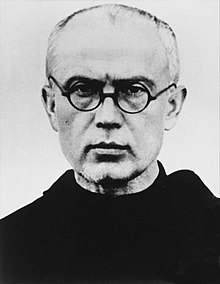“What prepares the soul to be united with God is the desire for God” (St. John of the Cross)
From time to time it is helpful to pause and consider whether we are sincerely seeking after God. It is a valuable spiritual exercise simply to gauge your desire for God. A question to consider is whether there is anything in your life you value more than God? It is critical that you love God more than self, and all created things in God.
A great desire for God, the Summum Bonum (Greatest Good), is key to our spiritual progress. The saints saw with true wisdom that the great good in life is the “Ever-Blessed God” who is Infinite Goodness (what can compare to Infinite Goodness: all the other goods in the world, wrapped together as one big bundle of good, are less than nothing compared to He who IS); and seeing this truth, and moved by it, the saints went after God with an unremitting intensity, knowing that union with this Infinitely Good God was the only true and final end of life.
We affectionately call Saint Therese “The Little Flower”. And all the saints were aware of their extreme littleness compared to God: humility is the pathway to God. But it would be a mistake not to see in Saint Therese the heart of a lion who went after God with a ferocious appetite. In fact, Saint Therese in her autobiography compares herself to “a weak little bird” who has “the eyes and heart of an eagle” (Manuscript B). An ardent desire for God – above all created goods – is characteristic of the saints.
The sentimental image of Therese as a charming French girl who gave her life to God by becoming a nun and offered up little sacrifices on God’s behalf is true – yet her life runs even deeper than that. Her life is the story of a girl and then a young woman who was radically in love with God and who wished to offer herself to God in an exchange of love that took her completely beyond herself and into God (nuptial union). Therese’s “little way” of “making love the mainspring of every action” requires the profound, constant and universal mortification of self-love and self-interest. It is a little way but with huge implications for growth in holiness. The sweet, little way is a death – a death to self. Under-girding Therese’s little way, therefore, is an ardent love of God expressed by a sacrificial life.
Of Therese, Father Christopher O’Donnell says: “When we get beneath the language and culture of Therese, we find that for all her charm, she was almost ruthless in her pursuit of holiness in her complete sacrifice to God’s merciful love.” Here are a few examples from Saint Therese’s autobiography which demonstrate her great desire to offer herself to God:
– she reflects in her autobiography that around age 6 “I loved God intensely, and very often I offered Him my heart in words taught me by Mummy” (Image, p.32);
– At age 13 she writes these words of Saint John of the Cross in “fine lettering” : “To suffer and to be despised” (Gaucher, p.11);
– At age 14 “while contemplating an image of Christ on the cross, she resolved to ‘remain in spirit at the foot of the cross’ in order to gather the blood that drips from his wounds and give it to souls” (Gaucher, p. 13); and
– While a nun at Carmel (around age 22) she makes a profound offering of her life to God as a “victim of love” in a written text available online entitled, “An Act of Oblation to Merciful Love.”
What is the lesson here? It is this: you gotta want God. You gotta go after God with great desire. Oh Mother Mary, please place in our hearts a portion of your own desire for God.
Practical recommendation: make a novena to Saint Therese for either a greater desire for God or for greater confidence in God.
“You will seek me and find me when you seek me with all your heart,” said the Lord (Jeremiah 29:13).
Tom Mulcahy, M.A.
References: In the opening pages of The Ascent of Mount Carmel Saint John of the Cross constantly reminds the reader of the nothingness of everything else compared to God, and I am using his language and that of Father Faber in this note (paragraph two). I am also relying on Bishop Guy Gaucher’s book, John and Therese: Flames of Love. Photograph of Saint Therese, Public Domain, U.S.A. Saint Therese’s Feast Day is October 1.
To SHARE on SOCIAL MEDIA: click on “Leave a comment” or “Comments” below (and this will bring up social media icons if they are not already present).
To LEAVE A COMMENT: click on “Leave a comment” or “Comments” below, and then scroll down to the box which says, “Leave Your Own Comment Here,” which is at the end of any comments already made. If the comment section is already present, merely scroll to the end of any comments already made.
All rights reserved.
Any ads following this note are by WordPress and not CatholicStrength.












